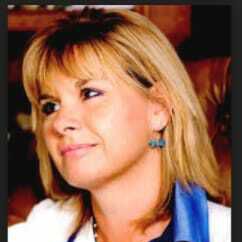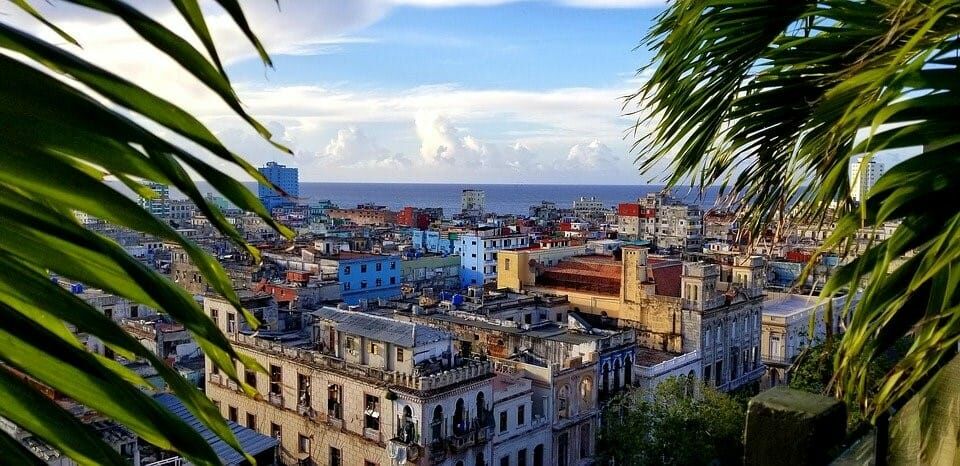Trauma is personal. It does not disappear if it is not validated. When it is ignored or invalidated the silent screams continue internally heard only by the one held captive. When someone enters the pain and hears the screams healing can begin.
Danielle Bernock
27th June is National PTSD Awareness Day, a day dedicated to creating awareness regarding PTSD (Post Traumatic Stress Disorder). As of 2010, It is acknowledged annually on this date, by the US Senate, and subsequently the entire month of June as PTSD Awareness Month. The aim of this article is to outline the condition, its prevalence and discuss both the conventional and holistic approaches that have proven to be effective in its management.
It is a complex, difficult to treat condition; the objective here is to look at a multi-dimensional, integrative approach, as the published evidence suggests the conventional route to treatment is often inadequate. Some successful treatments have been established, but many patients continue to have symptoms and have maybe not explored other empirically (or otherwise proven) CAM therapies, which could, according to the observational and empirical evidence, offer great relief, either on their own, or as an integrated modality. ‘The two FDA-approved medications for the treatment of PTSD (sertraline and paroxetine) on average confer minimal to modest benefits that are not generally maintained over time. Furthermore, the development of new pharmacological treatments for PTSD has been described as stagnant.’ Krystal JH, Davis LL, Neylan TC, et al: (2017)
Many CAM therapies have proved to help, including meditation, yoga, acupuncture, exercise, and relaxation approaches; also, talk therapies such as psychotherapy. ‘One category of psychotherapy, cognitive behaviour therapies (CBT), is particularly effective’: Parekh, R (2017) Torres, F (2020)
In addition, homeopathy has been seen to have tremendous benefits for patients and has subsequently reduced suffering and aided healing. As this is such a huge topic and area of extensive, ongoing research, I will give links and a brief summary to colleagues’ work, that one may access, for detailed accounts and case details, to obviate repetition, and to help with in-depth understanding of the condition and the remedies used in each case.
Firstly, it is necessary to briefly outline the condition:
What is PTSD
‘Post-traumatic stress disorder (PTSD) is a mental health condition that's triggered by a terrifying event — either experiencing it or witnessing it. Symptoms may include flashbacks, nightmares and severe anxiety, as well as uncontrollable thoughts about the event. Most people who go through traumatic events may have temporary difficulty adjusting and coping, but with time and good self-care, they usually get better. If the symptoms get worse, last for months or even years, and interfere with your day-to-day functioning, you may have PTSD.’ (Mayo Clinic) Detailed symptoms and approaches can be also accessed through this site.
Who is at risk?
The following statistics are based on the U.S. population from The National Centre for PTSD:
About 7 or 8 out of every 100 people (or 7-8% of the population) will have PTSD at some point in their lives.
About 8 million adults have PTSD during a given year. This is only a small portion of those who have gone through a trauma.
About 10 of every 100 women (or 10%) develop PTSD sometime in their lives compared with about 4 of every 100 men (or 4%).
(National centre for PTSD)
It is a common misconception, as we can see above, that men, are at the highest risk of developing the condition. Women are about twice as likely as men to develop PTSD: Kessler, R.C., Sonnega, A., Bromet, E., Hughes, M., Nelson, C.B. (1995). Women who have gone through trauma, including women in the military, are more likely than men who’ve experienced trauma to develop PTSD. Among women who are raped, about half develop PTSD: Brown, K. (n.d) Military veterans as a group are at very high risk of PTSD. About 14% of veterans of the more recent conflicts in Iraq and Afghanistan developed PTSD after returning home: RAND Corporation, (2008.)
Regardless of gender, some factors that increase risk for PTSD include:
Living through dangerous events and traumas
Getting hurt
Seeing another person hurt, or seeing a dead body
Childhood trauma
Feeling horror, helplessness, or extreme fear
Having little or no social support after the event
Dealing with extra stress after the event, such as loss of a loved one, pain and injury, or loss of a job or home
Having a history of mental illness or substance abuse
(National Institute of Mental Health)
The Homeopathic approach
Individualisation, in homeopathy is key, however there are certain remedies, which of course spring to mind, but it has to be stressed that each situation and patient is unique, and a full case should be taken. Here are some of the possible indicated remedies that come to mind, courtesy of The National Centre for Homeopathy:
Aconite: extreme fear, frequently accompanied by an unexplainable, vivid sense—even certainty—of imminent death, along with restlessness and agitation. The victim looks scared and has very small pupils. Most helpful during the first hours after a traumatic event (especially disasters), it might also be helpful many years later.
Arnica: for people who suffer from PTSD as a result of a terrible car or motorcycle accident. They may be morbidly afraid to ride a bike or drive a car.
Arsenicum album: victims are anxious, restless, and fidgety. They constantly call for help, need to be reassured, and crave company. They may become chilly and may feel much worse after midnight. They’re unable to sleep and may develop diarrhoea from severe anxiety. They’re also thirsty for small amounts of cold drinks.
Stramonium: for people with nightmares (when a child wakes up terrified and remembers the dream) and night terrors (when a child wakes up morbidly frightened but doesn’t remember the dream). Some children develop violent behaviour after a terrorizing experience. This violence seems to come in outbursts, without any apparent premeditation. They may become afraid of the dark, of dogs or other animals, and of water. Some children begin to stammer; others may exhibit various grimaces and twitches.
Another important remedy to consider for PTSD - Buddleia Davidii
Another valuable remedy, which is worth focussing on, possibly above all the others, as it seems to resonate hugely with PTSD on every level is Buddleia Davidii- often referred to as ‘The Arnica of the Soul.’ Originally proven as a meditative remedy by Madeline Evans, (Meditative proving volume I.) she states: ‘A powerful remedy for shock and trauma which has infiltrated the being on all levels, including the spiritual. Works in a very powerful but gentle way, releasing layers of trauma and fear. Its effect is to clear deep fear, shock and trauma from the psyche and remove the mutated symptoms of such.’ The remedy is known as a homeopathic tranquilliser, healing deep distress. Its effects can be powerful but gentle, releasing layers of trauma and fear, bringing lightness, peace, calmness, tranquillity and protecting the nervous system. This is only a small part of the remedy’s symptom picture and affinities, the extensive remedy picture can be found in her book, as discussed above. One can see and feel instantly how it could help heal the trauma of PTSD, no matter what the aetiology.
I cite here 2 beautiful cases using this remedy, to demonstrate its deep acting effect: http://www.interhomeopathy.org/a-true-remedy-for-trauma-two-cases-of-buddleia-davidii
‘Besides being a huge trauma remedy, I find that this is a remedy for this day and age. Most of my Buddleia prescriptions are for people who are just going through too much at the same time – it need not all be negative… These people get overwhelmed and then blocked. They often describe feeling many emotions at the same time, for example: “I feel happy, sad, angry and relieved at the same time.” This remedy will bring equanimity. Often, that is all they need: a breather, which makes this remedy, in my opinion, all the more wonderful. If we give these people Arnica, Nux, Ignatia or some other acute remedy, it will easily put its matrix over the essence of the patient, possibly suppressing certain processes. Buddleia in its way of healing comes before all others. It brings a calmness from which the patient can decide what needs to be dealt with and in which way. If that causes problems one can still give Nux, Ignatia, etc., but I’ve found that people often work it out without further help.
Wiet van Helmond:(2013)
Specific cases and works by other colleagues on PTSD
Another beautiful case by is Dr Larry Malerba D.O, he states: ‘When combined with proper medical management, emotional support, and spiritual counselling, a well-chosen homeopathic medicine that resonates with the energetic imprint of an individual's symptom pattern can relieve a great deal of the suffering associated with PTSD.’
A Veteran With PTSD Gets Help From Homeopathy: https://www.huffpost.com/entry/homeopathy-ptsd_b_1649398?utm_hp_ref=ptsd
A wonderful, comprehensive article on understanding PSTD, from epidemiology through causes, symptoms though to highlighting the homeopathic research is by Uta Middlestadt, it can be found here: https://www.researchgate.net/publication/320704121_Post-Traumatic-Stress-Disorder_and_Homeopathy
Similarly, I would highly recommend this extensive study of PTSD by my colleague Renita Hermann: https://www.sfhomeopath.com/pdf/PTSD-HWC.pdf
Conclusion
This article has only touched the surface of a condition that requires much focus and attention. I have tried to do it justice, by highlighting the key features and routes to healing, whilst giving links and references for greater understanding. PTSD I have learnt is a ‘condition of our time.’ Victims are left with an overwhelming trauma and a desecration and violation of anything that could be considered ‘normal.’ As the few cases here have demonstrated, getting effective treatment after PTSD symptoms develops can be critical to reducing the symptoms and improving ‘normal’ function.Our work, in whichever medical modality used, calls on us to confront, with our patients and within ourselves, extraordinary human experiences. This confrontation is deeply humbling in that on each occasion, these experiences challenge the limits of our humanity and our view of the world, by forcing us to enter that of another; the outcome of which could hopefully be life changing in a universally powerful way.
References
Brown, K. (n.d.). Halting the Legacy of PTSD Harvard Public Health.
Kessler, R.C., Sonnega, A., Bromet, E., Hughes, M., Nelson, C.B. (1995). Posttraumatic Stress Disorder in the National Comorbidity Survey Archives of General Psychiatry; 52(12): 1048–1060.
Krystal JH, Davis LL, Neylan TC, et al. 2017 It is time to address the crisis in the pharmacotherapy of posttraumatic stress disorder: a consensus statement of the PTSD Psychopharmacology Working Group. Biol Psychiatry.;82: e51-e59.
Malaktaris, A, PhD, Ariel J. Lang, PhD,(2018) MPH Complementary and Integrative Health Approaches for PTSD
Available at: https://www.psychiatrictimes.com/view/complementary-and-integrative-health-approaches-ptsd
Mayo Clinic: Post Traumatic Stress Disorder. Available at: https://www.mayoclinic.org/diseases-conditions/post-traumatic-stress-disorder/symptoms-causes/syc-20355967
National centre for PTSD Available at: https://www.ptsd.va.gov/understand/common/common_adults.asp
https://www.ptsd.va.gov/index.asp
National Institute of Mental Health, Available at: https://www.nimh.nih.gov/health/topics/post-traumatic-stress-disorder-ptsd/index.shtml#part_145372
Parekh, R (2017) Torres, F (2020) What is Post traumatic Stress disorder? Available at: https://www.psychiatry.org/patients-families/ptsd/what-is-ptsd
RAND Corporation. (2008). Invisible Wounds of War: Psychological and Cognitive Injuries, Their Consequences, and Services to Assist Recovery
Wiet van Helmond (2013) A true remedy for trauma: two cases of Buddleia davidii
Available at: http://www.interhomeopathy.org/a-true-remedy-for-trauma-two-cases-of-buddleia-davidii
As we believe in giving various perspectives a voice, we may publish ideas we don't necessarily agree with, therefore the views of the authors do not necessarily reflect the views of Magic Pills, Ananda More, or Phosphorus Films.



